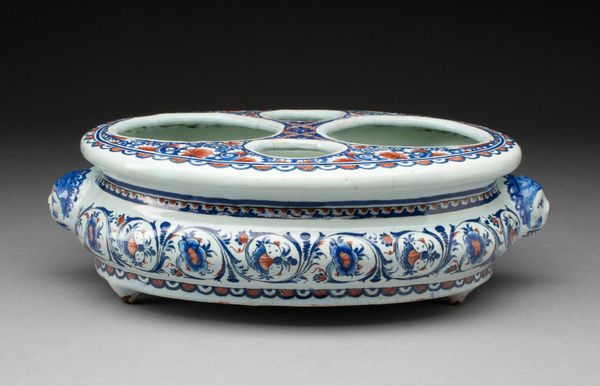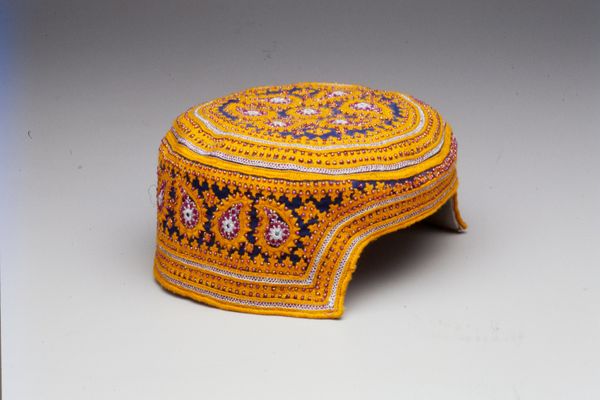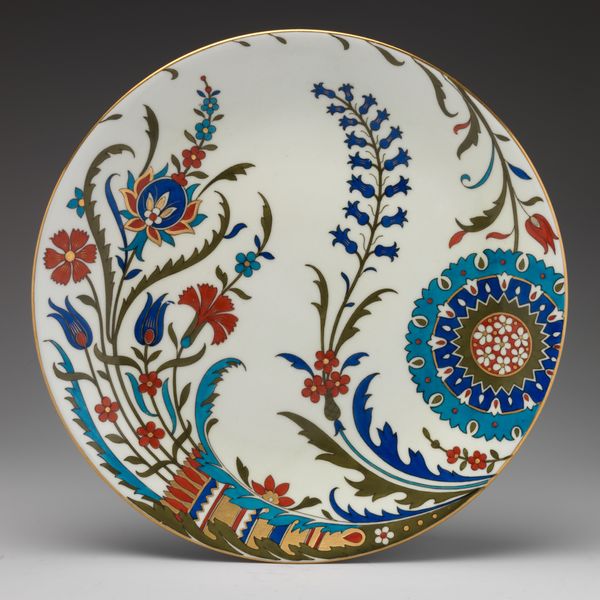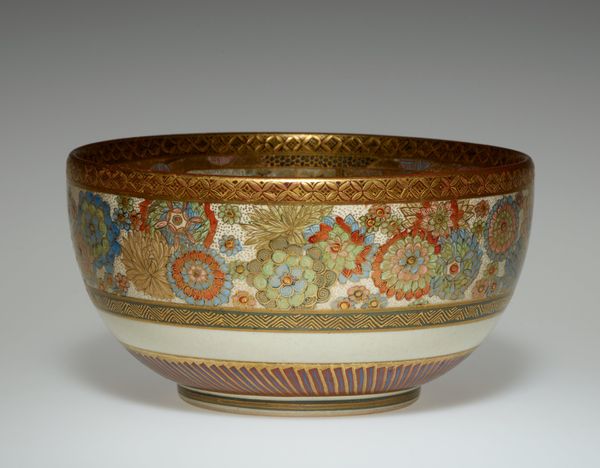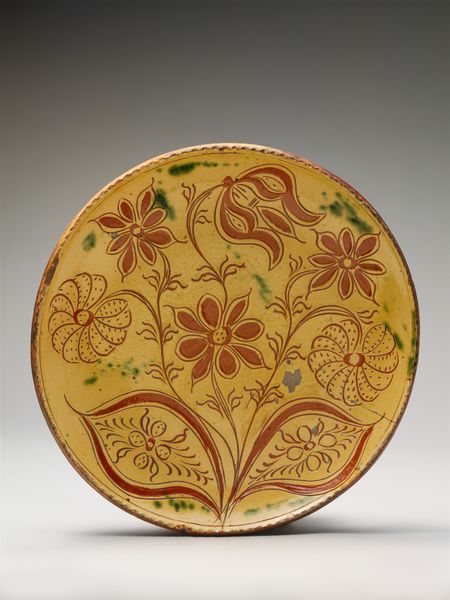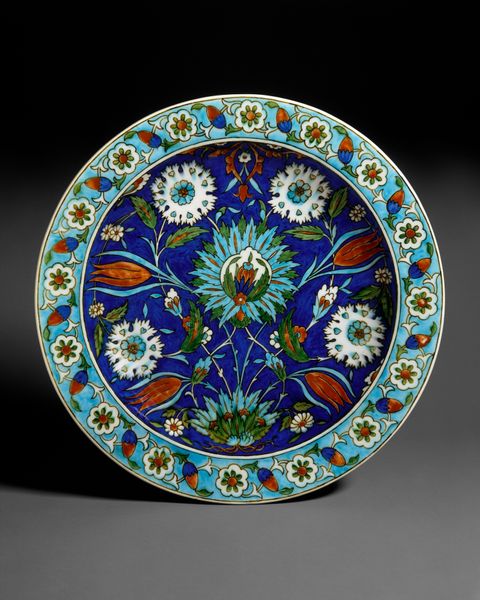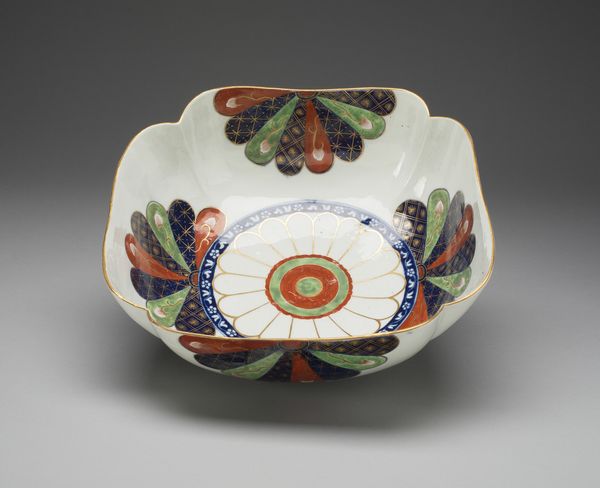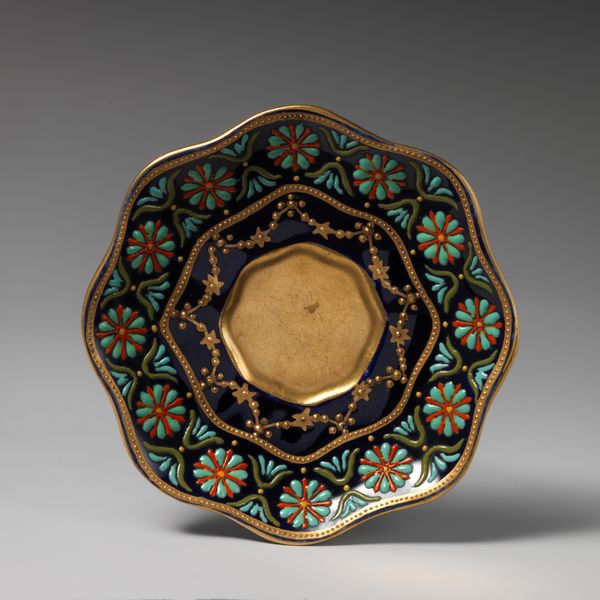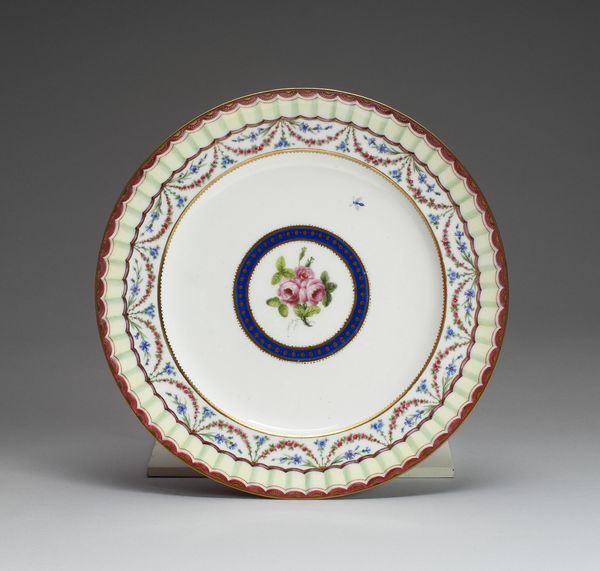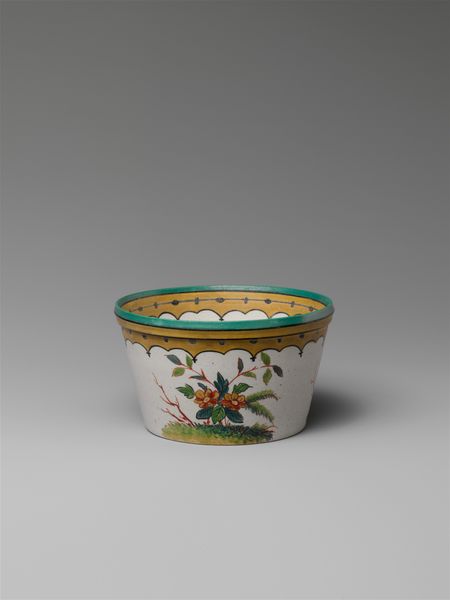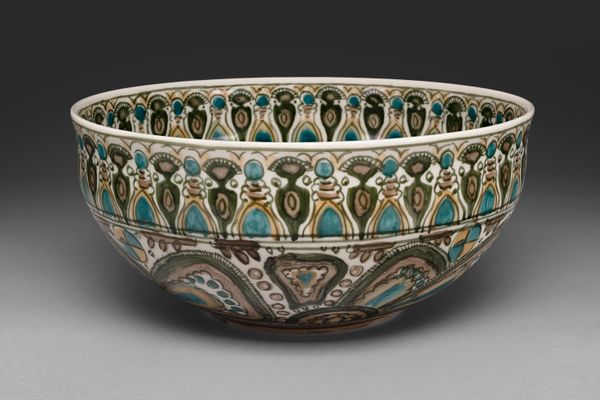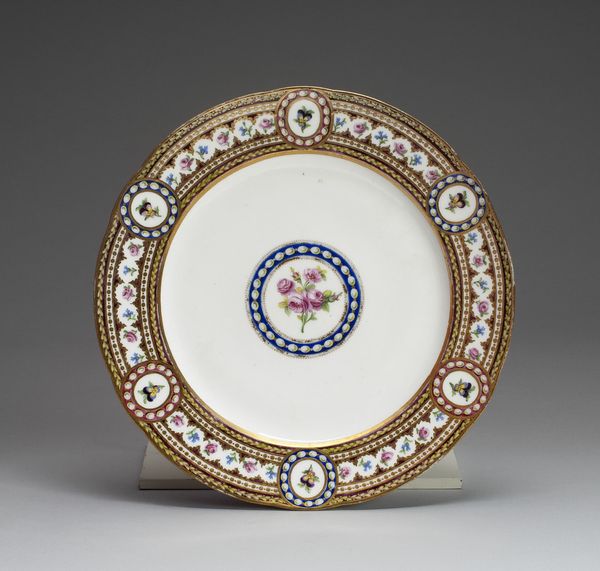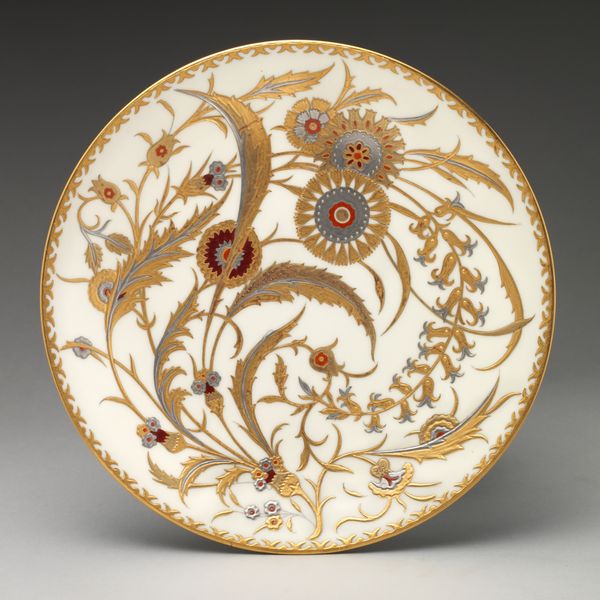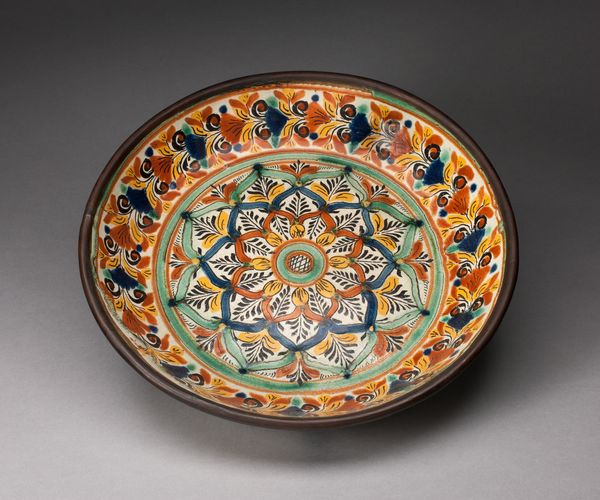
Dimensions: 15/16 × 2 3/4 × 1 15/16 in. (2.4 × 7 × 5 cm)
Copyright: Public Domain
Editor: This is Lucien Falize's "Box," created sometime between 1870 and 1880. It's a decorative box made of metal and enamel. The intricate floral patterns are stunning; they almost give it a jewel-like quality. What stands out to you about the imagery in this piece? Curator: The floral motifs aren't just decorative; they represent a deep well of symbolic language. Consider the historical context: Europe’s fascination with the Orient in the late 19th century. Does the design remind you of Mughal art, perhaps? Editor: Yes, the symmetrical layout and those stylized flower shapes definitely evoke Mughal designs. It almost feels like a European interpretation of Eastern aesthetics. Curator: Exactly. Falize translates Eastern visual culture into a Western artistic idiom. Look closely at how he uses enamel – how does that material itself function as a symbolic carrier? Editor: Well, enamel gives it this bright, almost ethereal quality. It also makes it seem very precious. Were these boxes used for specific purposes, do you think? Curator: More than likely. Perhaps for holding personal treasures. The box becomes a vessel not only for objects but also for memories and associations, all wrapped in this culturally layered package. This combination speaks volumes about cultural exchange and adaptation during that period. Editor: So, it's not just a beautiful object but also a story of artistic interpretation and cultural fascination captured in metal and enamel. I’m starting to see that visual culture can carry a lot more symbolic information than I first considered. Curator: Indeed! These symbols carry both intended meaning and historical information to new audiences across time, a complex network of cultural memory made tangible.
Comments
No comments
Be the first to comment and join the conversation on the ultimate creative platform.
